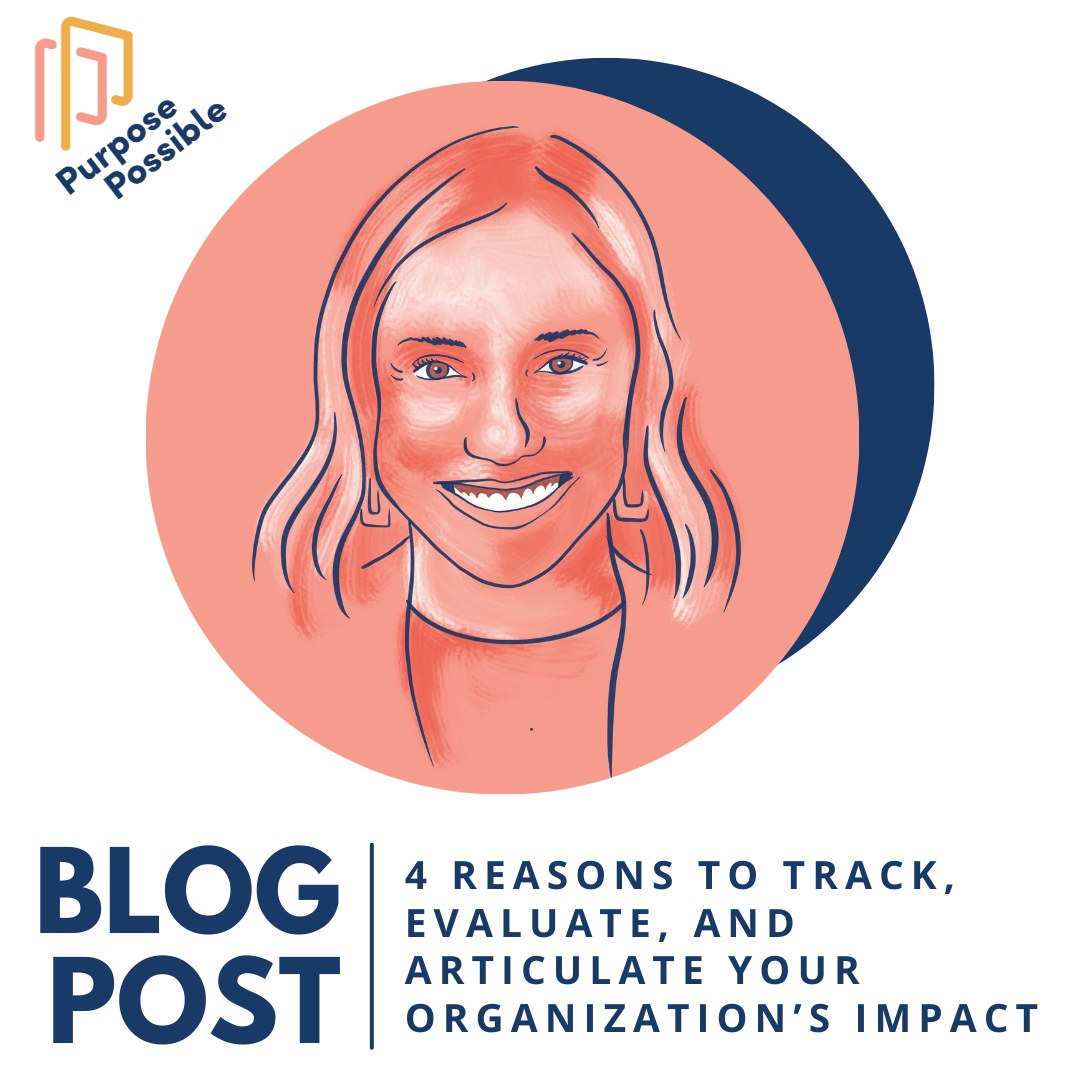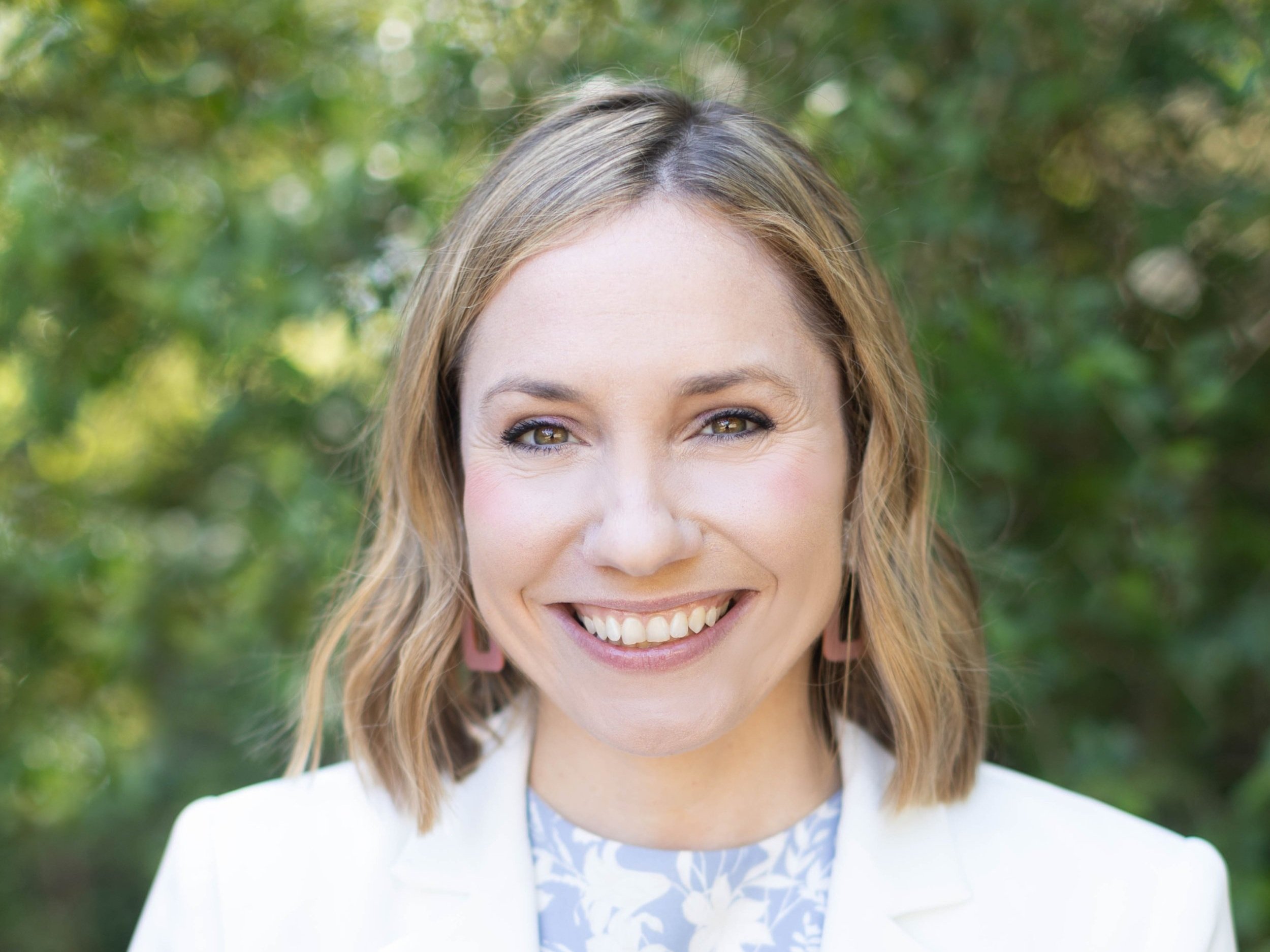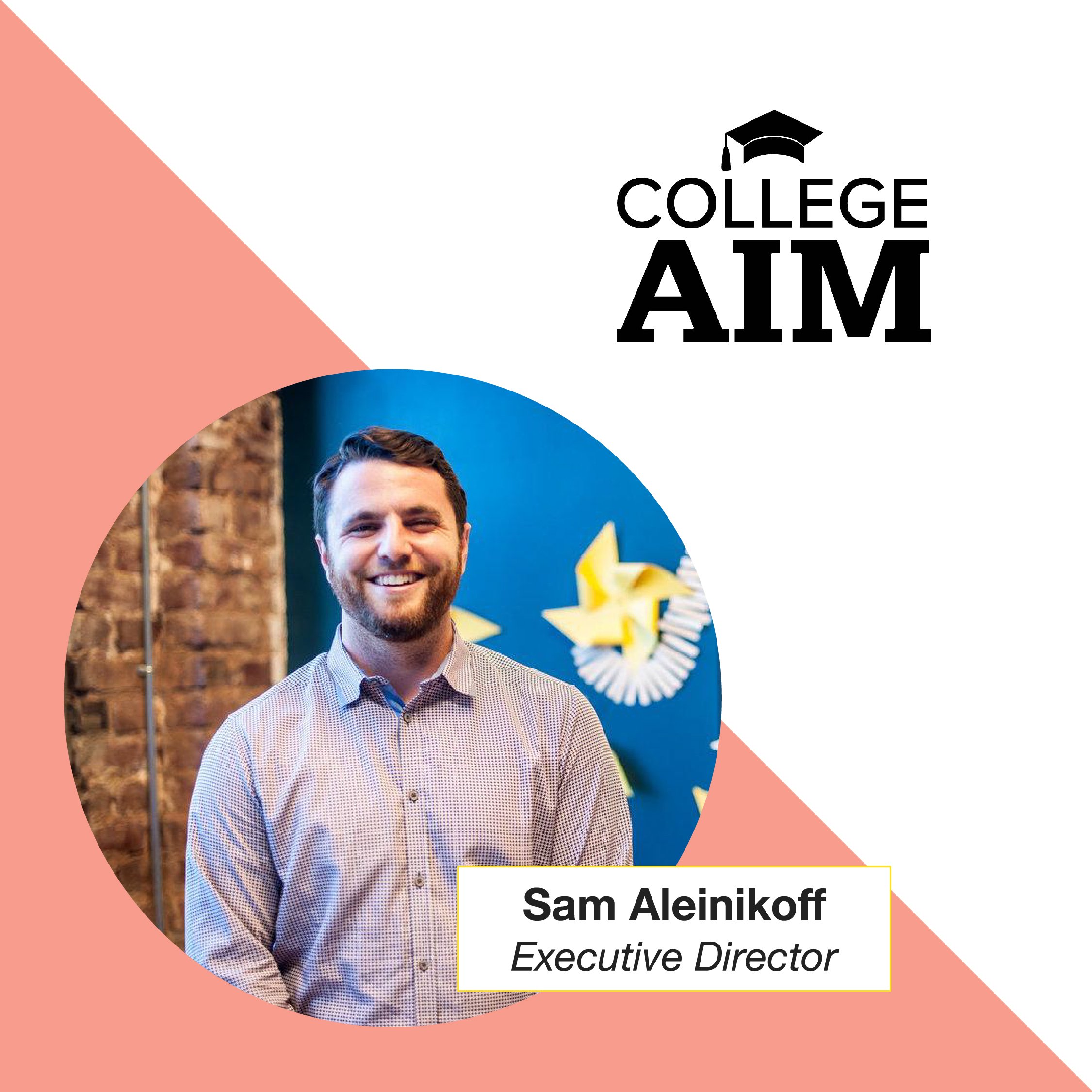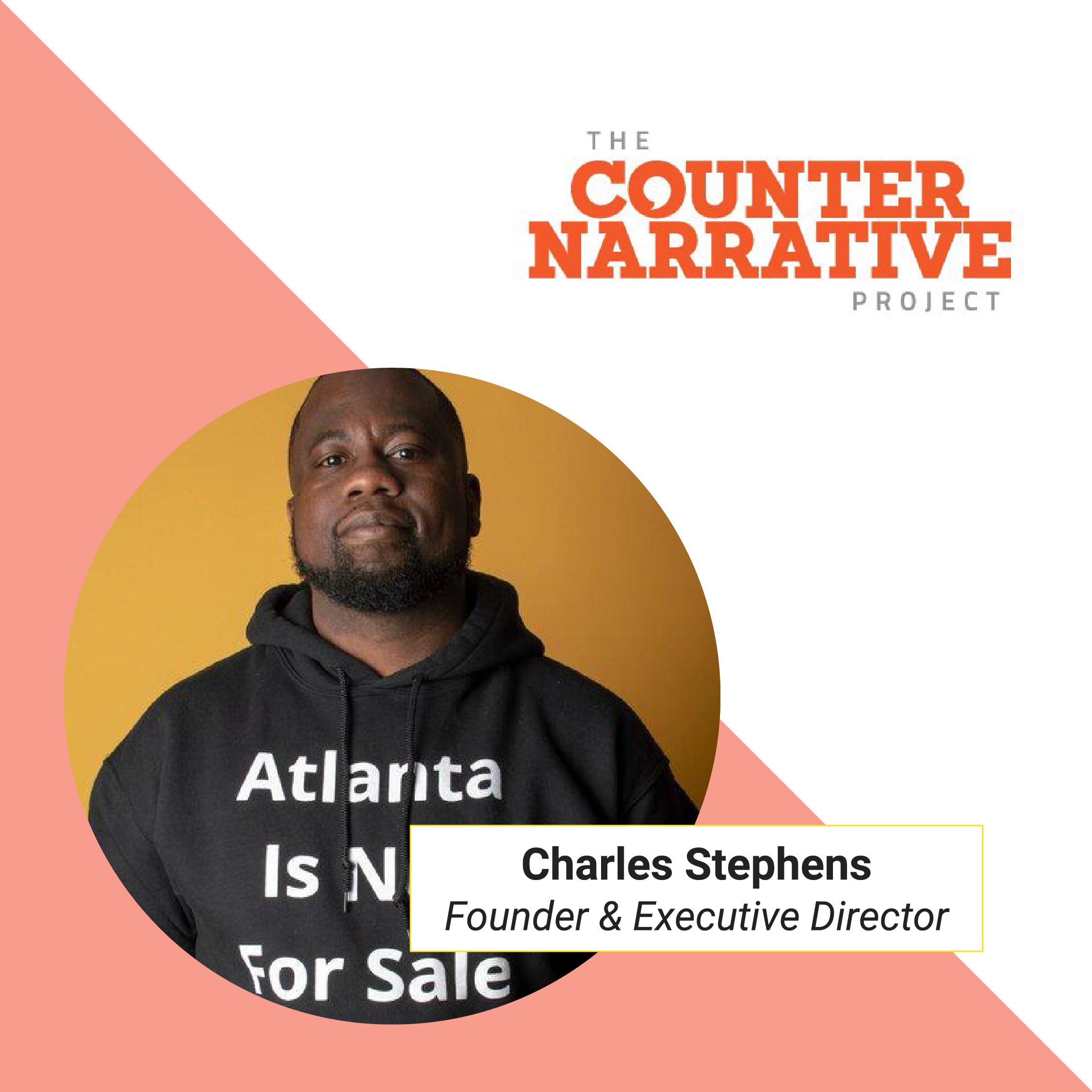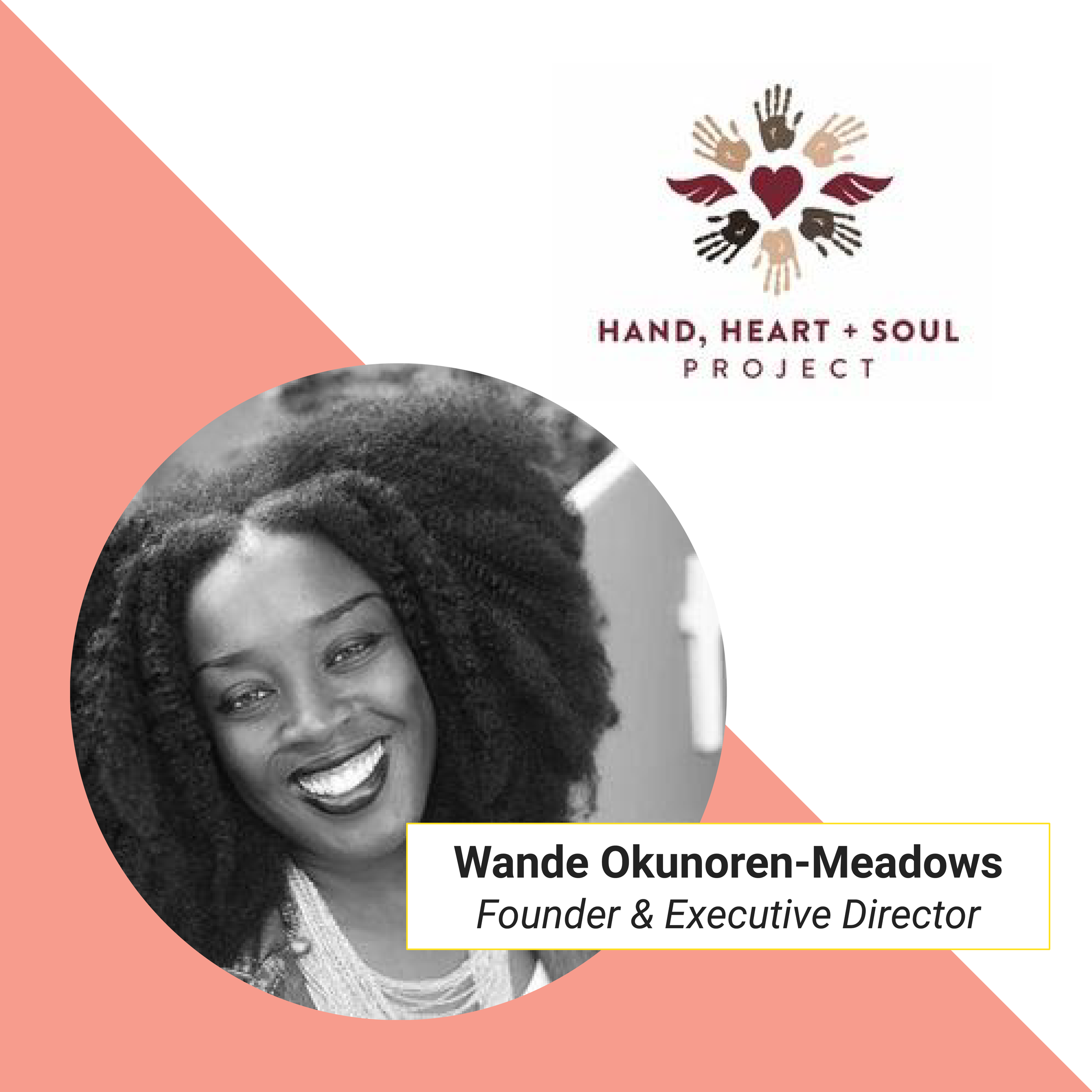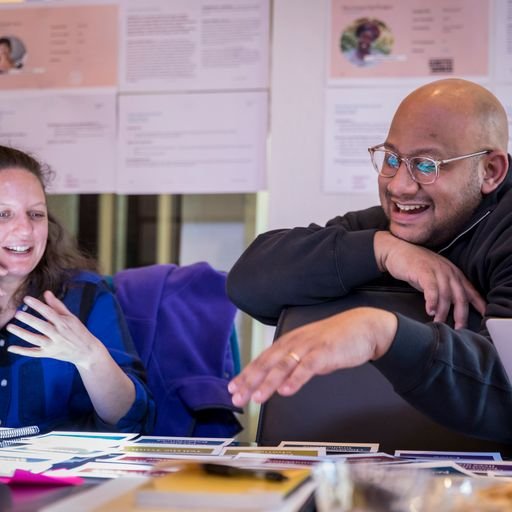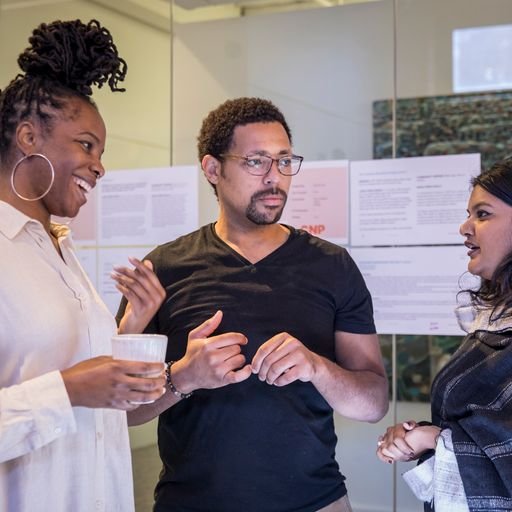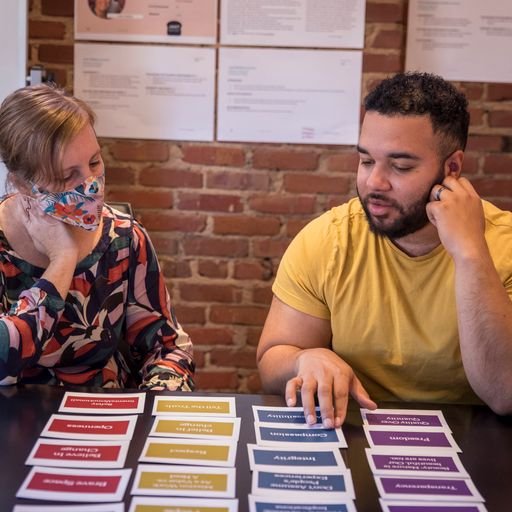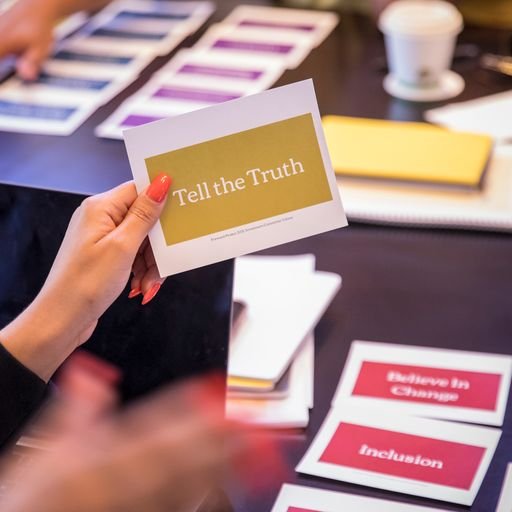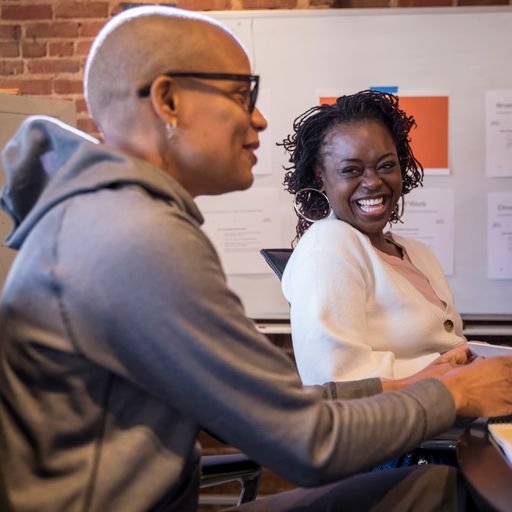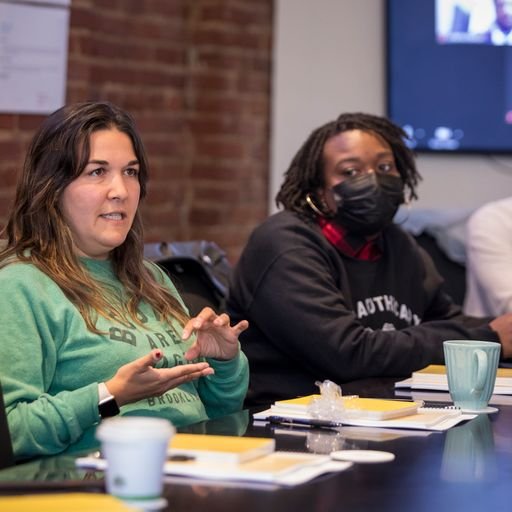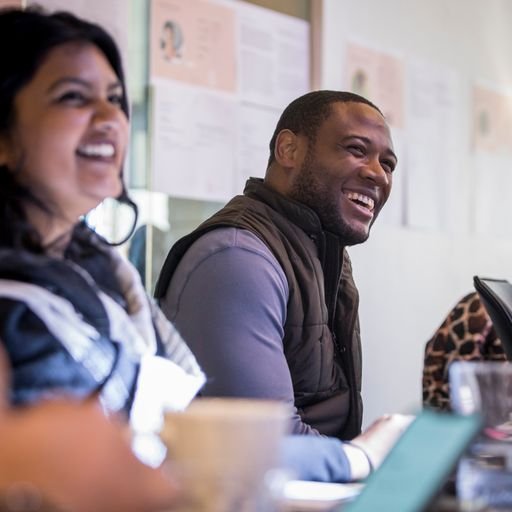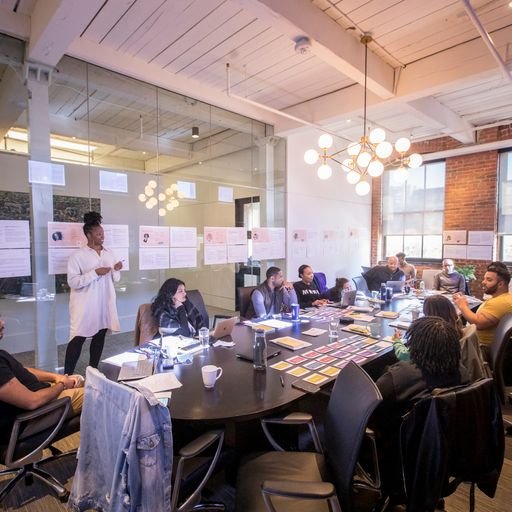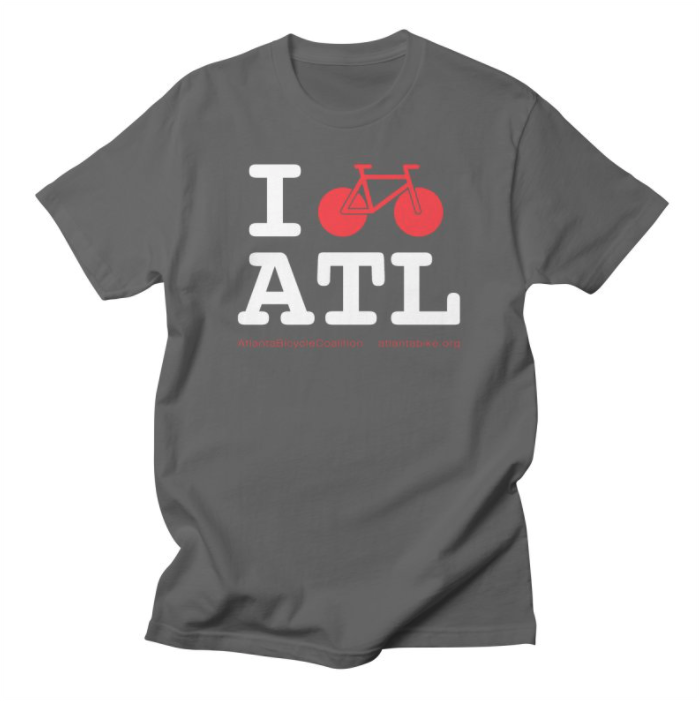Virginia Nonprofit Sector Report 2023
Much like the 2022 State of the Baltimore Nonprofit Sector released by T.Rowe Price Foundation in late 2022, this new report shows that the nonprofit sector in our region continues to be robust but needs significant capacity and leadership to continue to thrive. As a consulting firm in the DMV region, we are also seeing some of the most impactful nonprofits struggle with staffing, burnout, financial challenges, and a strategic vision for the next horizon.
This week the Virginia Nonprofit Sector Report: 2023 Snapshot was released by the Center for Nonprofit Excellence (CNE), whose mission is to promote excellence through training and executive education for nonprofits in Charlottesville and Central Virginia.
Much like the 2022 State of the Baltimore Nonprofit Sector released by T.Rowe Price Foundation in late 2022, this new report shows that the nonprofit sector in our region continues to be robust but needs significant capacity and leadership to continue to thrive. As a consulting firm in the DMV region, we are also seeing some of the most impactful nonprofits struggle with staffing, burnout, financial challenges, and a strategic vision for the next horizon.
We know how busy nonprofit are so here are Purpose Possible’s key takeaways:
Virginia nonprofits believe in the work they’re doing and in the positive change they’re making in their collective community. Of the 242 respondents, 88% believe that their organizations stimulate positive change and resilience with a culture of collaboration, adaptability, and continuous learning. This is great news for the sustainability of the sector across the commonwealth as many organizations begin to evaluate their effectiveness across our region.
The sector remains robust in Virginia with over 26,732 registered 501(c)3 nonprofits generating $86.9 billions dollars in revenue across the commonwealth. Despite this number, the revenue does not always align with the level activity in the respective priority areas: health-related organizations represent only ¼ of the nonprofits however, they account for 41% of the revenue generated.
Staffing and workforce concerns continue to be top of mind for nonprofit executives as they recover COVID-related shifts in organization structure. Across the sector, we are seeing articles about burnout, challenges with finding key leadership positions, and staff advancement. Creating a pipeline of passionate team members is a challenge for nonprofits and philanthropy has an opportunity to support capacity in this area for many organizations struggling to keep up with the salaries, flexible schedules, and benefits of the for-profit sector.
Capacity building support continues to be one of the most urgent needs for VA nonprofits and most would like that support in dollars. Unrestricted general operating funds have been a hot topic in the philanthropic world for many years as nonprofits have rallied for mORE trust-based support for their capacity building efforts like staffing and operations.
The sector in VA needs a pipeline to more diverse leadership that reflects their constituents and the wider population – this includes the staff AND board members. Nonprofits in VA recognize that their leadership is overwhelmingly white women while their middle management and operations teams are more diverse. They are seeking guidance from leaders in DEI to help them create strategies for diverse and inclusive leadership.
Relationships are the true currency and VA nonprofits are seeking deeper relationships with peers, government, and philanthropy in new ways. Nonprofits say they are interested in partnerships, joint ventures, and information sharing to increase their collective impact. They are looking for opportunities to “connect purposefully.”
Evaluation resources are sorely needed to increase nonprofits’ capacity to truly measure results. The urgency of this support is evident with 80% of survey respondents indicating a strong need. Again, philanthropy has an opportunity to support the capacity of community building work but supporting nonprofits’ efforts to measure their impact in meaningful ways to them. This includes understanding that not all programs can be evaluated using qualitative measures.
For Virginia nonprofits, the needs are clear: more capacity, more collaboration, and more resources will allow organizations to continue thriving. The vital work in health, education, youth development, and more need the support of philanthropic institutions and government agencies to do their work in a deep, connected, and impactful way.
Access the full report at: thecne.org/virginia-nonprofit-sector-report
Leadership In Color
We are proud to announce a new content series led by Managing Partner Starsha Valentine. In an effort to address some of the unique challenges facing minority leaders as they navigate organizational growth, strategic decision-making, fundraising, and more, we are launching LEADERSHIP IN COLOR!
PART I: WHAT LEADERSHIP LOOKS LIKE IN COLOR
By Starsha Valentine
Partner and Mid-Atlantic Managing Director
We’ve all seen the headlines across numerous journals: Black-led nonprofit organizations receive less funding, grow at a slower pace, and are under-resourced compared to their white-led peers.
As recently as 2019, Echoing Green and Bridgespan’s Racial Equity and Philanthropy report found that “...on average the revenues of the Black-led organizations are 24 percent smaller than the revenues of their white-led counterparts. When it comes to the holy grail of financial support— unrestricted funding—the picture is even bleaker. The unrestricted net assets of the Black-led organizations are 76 percent smaller than their white-led counterparts. The stark disparity in unrestricted assets is particularly startling as such funding often represents a proxy for trust.”
But the disparity goes beyond just dollars and cents. Despite concerted efforts to shift power….
Purpose Possible Core Values: How We Show Up Everyday
At Purpose Possible, we think a lot about how our firm shows up for our clients, our fellow team members, and our communities everyday. In 2020, before Purpose Possible was launched, our early consultants spent time establishing a set of core values to guide the purpose and vision for the firm. Since then we have revisited and refined those values every year to best reflect how we work and who we work with. Now, as a firm of over 40 consultants in nine states, our values are ever more present in our daily decision making.
Our initial values brainstorm board from our first firm retreat.
At Purpose Possible, we think a lot about how our firm shows up for our clients, our fellow team members, and our communities everyday. In 2020, before Purpose Possible was launched, our early consultants spent time establishing a set of core values to guide the purpose and vision for the firm. Since then we have revisited and refined those values every year to best reflect how we work and who we work with. Now, as a firm of over 40 consultants in nine states, our values are ever more present in our daily decision making.
Partners, Susannah, Laura, and Starsha take a moment to share more about our Four Core Values and how we practice them every day for our clients, consultants, and communities.
Client Impact
Our business is built around the clients we serve: who we hire, what we do, and how we do it. Every decision we make is based on what will make our clients feel supported, delighted, and relieved. We intentionally hire team members with deep experience working with the organizations and in the industries we serve. This allows us to have a keen understanding of the quotidian challenges of our clients and create strategies for how to overcome them. It also means that our consultant teams can empathize with the work that our clients are tackling, allowing them to better gauge how clients can prioritize the things that will have the greatest impact on their organization. We also focus on creating a space where our team can grow and thus provide consistency for our clients.
Our services continue to evolve in response to the needs of our clients. One of our main promises is that we meet clients where they are to help them grow to where they want to be. This often means having the agility to move from one type of service to another as needs change and evolve over the course of our work together. We also regularly evaluate our success rates to assess how well we are doing. Just like with the boards we work with, the process of assessing our own work with a start, stop, continue lens helps us to maintain a high level of work for our clients.
Inclusive & Empowered Team
Our team is one of parents, caregivers, pet owners, siblings, and more. These roles are valued aspects of the lives of our personnel. In building an inclusive and empowered team, we aim to create an environment that allows for flexible, digital-first work, to support all of their identities.
We also know that WHEN our team works is just as important as WHERE they work. As a digital-first firm, our team members may work from home, one of our offices, or at any other location or time that is convenient. This flexibility allows us to recruit and maintain talent from all walks of life and experience. We offer a liberal paid-time-off policy and encourage rest, especially after busy seasons, throughout the year. We observe all federal holidays and everyone’s birthday is a paid day off as well. Our nontraditional approach to where and when our staff works allows us to have a more diverse and inclusive team across the country.
We also take careful consideration to bring in diverse perspectives and specialized skill sets. Having team members that can share experiences with each other and with our clients helps to foster a sense of belonging and camaraderie. Our consultants are often members of the communities that our clients serve. Many of our team members are volunteers for community organizations and they or their children participate in local programming. The people of Purpose Possible are neighbors and friends who utilize their expertise and local landscape knowledge to impact their projects more deeply.
Innovation & Experimentation
In the nonprofit world, where we often find ourselves falling prey to a scarcity mentality, it often feels safer to continue with what has been successful in the past versus trying something new. The same is true of consultants. In the world of consulting, there are hundreds of memes mocking the fact that consultants reuse the same presentation over and over, passing Power Points on for generations. At Purpose Possible, we know better. Our clients come to us because they need something different or more than they are able to accomplish on their own. We believe that it is our job to look at what has worked well, where the organization is today, and what’s is coming down the pike, to help figure out strategies and campaigns that will keep the organization moving forward. If 2020 taught us anything, it’s that we have to be open and able to change along with a very rapidly changing environment. Within our team, we share daily via Slack, meet weekly for status updates, and check in monthly to share thoughts, brainstorm, and workshop ideas, issues, and needs for clients.
For Purpose Possible, this means we are constantly in a state of learning and evolution. Our team regularly hears the phrase “we are building the plane while we are flying it!” We are constantly building, testing, evolving, and optimizing our systems and processes to improve them. Over the past year, Purpose Possible has doubled in size and with it, many of our previous ways of working have had to shift including our internal technology systems, reporting structures, team culture, and dynamics.
Mutual Respect
This seems like a fairly straightforward value, but it shows up across the firm in a number of ways.
We want to make Purpose Possible a great place to work, where employees are proud to say they work here and where they feel valued and appreciated. To that end, last year, when the labor market came roaring back after COVID-19 layoffs, we launched a firm-wide compensation analysis and then began a process of right-sizing where necessary. In addition, while crafting an updated Employee Handbook, we studied the vacation/leave policies of companies that we admire and instituted industry-leading policies for our team. Finally, we have a very collaborative leadership style, in which our team members are consulted on key practices and decisions throughout the year.
It may surprise some to see the hashtag #noassholes on our Core Values page but think about the places where you’ve worked in the past. We’ve all been forced to put up with a co-worker or client who was truly terrible. To avoid this issue, we strive to weed out the bad apples in advance by screening and researching potential clients. Before we work with an organization we want to know if they have and abide by a non-discrimination clause and if their leadership team is reputable.
Hiring Q&A with Lara and Katyra
Did you know that 76% percent of hiring managers admit attracting the right job candidates is their greatest challenge!
Lara and Katyra teamed up to answer questions, provide recommendations, and share insights into their experiences.
Did you know that 76% percent of hiring managers admit attracting the right job candidates is their greatest challenge!
Lara and Katyra paired up to answer questions, provide recommendations, and share insights, and resources to make the hiring and recruitment process a little more efficient.
Lara and Katyra are two professionals with lots of experience and insight into the toils of recruiting, hiring, team management, and much more. Lara Smith is the Director of Organizational Development Services at Purpose Possible. She oversees hiring and recruitment for the Purpose Possible team and our clients. Katyra Remmenga works with Same Page HR as a People Person and provides HR support for our firm, some of our clients, and other organizations. This duo teamed up to answer questions, provide recommendations, and share insights into their experiences.
Question 1 - How do you find quality candidates?
Katyra says: Look beyond the typical search.
Broaden your search by posting on multiple platforms. Sites like Workable.com will automatically post to all of the free job boards which significantly increases the number of candidates for a position. Also consider sharing the position with relevant groups on social media, professional networks, friends, or colleagues. Job seekers can be just as challenged and overwhelmed by positions as you are in searching. Sharing a position with industry specific networks can connect you with candidates that may not see your position on other platforms.
Lara says: Think outside the box with requirements.
Education, titles, and years of experience are often the first things hiring managers consider with an applicant. Everyone does not have the same access to resources, education, and opportunities, but this does not mean they aren't qualified to fill the role.
For education, consider what you want them to have gotten from their education instead of the degree, education level, or the school they attended. Are you looking for applicable skills or teamwork? Could they have received those same skills in another way?
Every organization uses different titling structures so look at what applicants do in their role and not just the title. Also consider what you are seeking in years of experience and not just the number of years. Covid and non-covid years may mean different types of experience depending on the company and the role. Consider the full picture of what’s needed before requiring education levels, tiles, or years of experience.
Also, 50% of applicants are looking exclusively for fully remote positions. A full time in-office requirement can drastically limit applicants.
Question 2 - What are ways to stay organized during the hiring process?
Katyra says: Automate the process as much as possible.
Automating the hiring process can save you time and energy. Most hiring platforms have a way to send automatic responses, invite candidates to interview, decline applicants, and much more. Many payroll systems also have automated processes for hiring – you may need to check with the provider about additional features. Workable.com, the system that posts to multiple sites, also has steps that can be automated. The goal is to move quickly through the hiring steps and be consistent with every applicant.
Lara says: Create an internal process before publishing the position.
Have a clear process laid out before the position is shared. Decide who else on your team will be a part of the process, let them know the plan, and hold time for meetings and interviews in advance. Create a checklist, folder, and/or spreadsheet to easily see where candidates are in the hiring process.
Purpose Possible uses Google Suite – we create folders for candidates, save recorded interviews, and link files in one central location.
Question 3 - How do you maintain consistency and fairness in the interview process?
Katyra says: There are a few things you can do:
1 - Have a clear understanding of what you need in a role ahead of time. This will eliminate guesswork when looking at qualifications.
2- Ask each candidate the same questions and don’t deviate! This saves time but it also ensures that every candidate is reviewed and considered equally.
3- Create a scorecard to rate each candidate's application and interview. The scorecard can be completed for each candidate by everyone in the interview and include any notes or questions to follow up on or discuss internally.
4- Be clear with the candidate about timeline and urgency to fill the role. If you need to hire quickly because of a vacancy or plan to hire in the future, let every candidate know that and when they can expect to hear back from you (whether that’s for next steps or declining).
5- Make sure your team knows what not to ask in an interview. Questions about age, family, ethnicity, and religion are illegal! Gusto.com has a great blog with a list of questions you shouldn’t ask and a few that you should.
Question 4 - What questions can be asked to determine applicant qualities like leadership, self sufficiency, and proactiveness?
Lara says: Ask about real experiences and interactions. Avoid hypotheticals.
Hypothetical questions are interesting but how we think we will react and how we actually react in situations tend to be very different. Asking about real experiences can give you a sense of how a person truly performs. If you're interested in someone’s ability to manage, think about what that entails. If you wonder if they need supervision, ask questions about taking the initiative or leading. Here are a few example questions:
Can you talk about a time when you saw a problem no one else did? How did you handle it?
Can you talk about a time when your work depended on other’s meeting deadlines and they weren’t?
Here are some additional notes from Lara and Katyra to help with the hiring process:
Salary transparency is important in today’s hiring landscape. This transparency also extends to sharing benefits, working location, and expected hours of work.
Prioritize the needs of the position in the job description. Let candidates know what the role entails, what skills are needed, availability necessary, and any other details that may impact the decision to apply.
If you aren’t getting applicants or quality applicants, review the job description, position title, and requirements. Compare your position to others in the market and seek feedback from colleagues.
Hebba Youssef has a great newsletter and social media presence with a lot of resources and tips for HR professionals and hiring managers.
Ashle Herd is a trainer and coach offering employers and employees tools to learn, grow, and work better.
The Chronicle of Philanthropy recently published an interesting article “Desperately Seeking Fundraisers.” This article discusses the wants and needs of fundraisers, the challenges they face which make the role stressful, and ways to improve the position for staff satisfaction and retention.
If you have any other questions or need support please let us know! Purpose Possible offers recruitment services and interim development for a range of organizations. Same Page HR offers full-service HR administration for small businesses without a dedicated HR department. Reach out to us if we can help with your hiring or organization needs.
Susannah at the Science of Philanthropy Initiative Conference
In September, I had the opportunity to present at the IU Lilly Family School of Philanthropy Science of Philanthropy Initiative Conference alongside our partner, Mailchimp. While one of our key takeaways from the conference was the realization that we did not take enough data analytics courses in school, others had some valuable takeaways for application in more practical fundraising efforts.
In September, I had the opportunity to present at the IU Lilly Family School of Philanthropy Science of Philanthropy Initiative Conference alongside our partner, Mailchimp. While one of our key takeaways from the conference was the realization that we did not take enough data analytics courses in school, others had some valuable takeaways for application in more practical fundraising efforts. As a note, it’s also important to remember that researchers and not practitioners primarily gave the presentations we watched. My takeaways are envisioning the real-world application of the data shared in presentations.
Donors don’t trust the communities they are funding to make appropriate decisions about how dollars are spent. Several presentations looked at test data regarding how donors directed funds, and despite knowing that recipients would prefer simple cash to be able to direct resources toward their needs, donors still preferred the paternalistic approach to giving. As organizations, donors, and foundations it is our responsibility to take a more intentional and community-led approach to our fundraising and giving, allowing those we serve to take a more active role in guiding the programs and campaigns we lead.
Crypto donations need to be available as an opportunity to smaller organizations. While I still tend to glaze over when I hear conversations about crypto, even I must admit that it is too large of an opportunity for nonprofits to ignore. Both at this conference, as well as The Giving Institute Symposium in July, there are countless studies and actual data on the growing opportunities here. However, what also is notable is that this often is administered and only available to organizations that are large enough to afford the platforms that can manage and process these donations, or the staff capability to add another type of donation to their portfolios. If this is to become a true opportunity for the nonprofit sector, it’s worth exploring how it can be further democratized to be accessible to all sizes of nonprofits, and not just those at an institutional scale.
The way we talk about and present the needs of the communities we serve is critical in how we fundraise. UC Berkeley professor Julianna Schroeder gave a great presentation on donor psychology and the ways in which donors tend to dehumanize the communities they contribute to which leads to donors prioritizing funding to services that lean towards more physiological benefits as opposed to supporting the psychological-based needs of communities. As fundraisers, it is of course easier to gauge the power of a donation in pounds of food, the number of people housed, or any countless other ways that communities can be served. However, it is imperative that we also not overuse the things that are easier to gauge in place of discussing the needs that may be less quantifiable, such as mental health services.
Do you have thoughts or experiences related to these topics? I’d love to hear about hear about them! sdarrow@purposepossible.com
Collaborative Budgeting
How fiscal and development teams can work together to create a proactive budget for the next year.
On September 22, 2022, Laura Hennighausen was joined by Germeen Guillaume for a live webinar discussing 5 tips fiscal and development teams can use as they collaborate on budgeting. Germeen and Laura gave perspectives from both sides and used real world examples and solutions that can organizations can begin to implement immediately. Questions and comments were accepted and answered through the live streaming platforms.
If you have any questions about this webinar or the tips discussed please email info@purposepossible.com or reach out to the presenters directly.
Laura Henninghausen
Purpose Possible Director of Strategic Philanthropy
Germeen Y. Guillaume
CEO and Founder of Visionary Accounting Group
Why Commit to Continuous Quality Improvement
In May, we began the conversation on the importance of committing to a formal Continuous Quality Improvement Strategy (CQI) with an initial blog post on this relevant topic. In it, we posed the question “Do you have a clear strategy on how to track, evaluate, and articulate your impact?” If you remain unsure of your answer to this question, we want to share four reasons on why you should invest in a strategy to affirm delivering mission-aligned successful programs are top of mind at your organization.
4 Reasons to Track, Evaluate, and Articulate your Organization’s Impact
Chris Brodnan collaborates with Purpose Possible on a new suite of services, offering support to clients in tracking, evaluating, and articulating their organization’s impact. With more than 10 years in the nonprofit sector in Atlanta, including the last four as the Regional Program Director at a summer learning organization, she has extensive experience developing and leading quality improvement strategies. She is excited to share why this work is important to help fulfill your mission and ensure program quality and fidelity.
In May, we began the conversation on the importance of committing to a formal Continuous Quality Improvement Strategy (CQI) with an initial blog post on this relevant topic. In it, we posed the question “Do you have a clear strategy on how to track, evaluate, and articulate your impact?” If you remain unsure of your answer to this question, we want to share four reasons on why you should invest in a strategy to affirm delivering mission-aligned successful programs are top of mind at your organization.
1. Clear metrics demonstrate program strengths and opportunities
Without having an evaluation plan with clear and measurable data and outcomes, you cannot clearly define where your program is succeeding and in need of improvements. This can be particularly useful if you are running multiple programs from different locations - you may know some sites are more successful than others but without benchmarks, can you clearly articulate why? With a dashboard of aligned Key Performance Indicators (KPIs) to compare sites to one another, you can lean into what aspects of each program run well and where potential opportunities exist. Examples include number of attendees/participants, percentage of returning attendees/participants, and percentage growth of new attendees/participants.
2. Data provides power to make key decisions
Once you have developed KPIs and have clear benchmarks of what is working and what is not, you can be empowered to make potential tough decisions. Need to close a program site? The data can be a clear indicator of the rationale and arm you with the evidence you need to make a difficult call. On the flip side, have you discovered your secret to success that will allow you to scale your program? Now you can share that with funders and explain why they need to invest further in your work!
3. Evaluations tell a story of your impact
There is always a story behind the data that goes beyond quantifiable numbers. Just because you served a specific number of individuals how do you know were they better off because they came to your program? Evaluations, whether external assessments or internal surveys, provide complementary qualitative data that allow you to build on successes and share more broadly with stakeholders.
4. Improvement over time demonstrates long-term success and sustainability
When you are collecting year-over-year data as part of a CQI process, you are ideally setting the performance goals higher each year and adjusting your work to align with the feedback you received as part of your assessment. The longer you engage in this process, the more you can demonstrate annual improvements and ideally growth and sustainability in your work.
If your organization needs support with evaluation and metrics let us know! We are here to help! Feel free to contact Chris at cbrodnan@purposepossible.com or send a message to info@purposepossible.com to get more information on how we can help!
5 Tips For A Binge-worthy Nonprofit Newsletter
While social media can be a powerful tool for building awareness, it’s not great for getting people to actually take action. To build a relationship with your audience that motivates them to attend events, volunteer their time, or donate to the organization, an engaging newsletter can’t be beat.
Want to engage supporters, drive donations, and build rapport with your audience? A newsletter does all that and more.
While social media can be a powerful tool for building awareness, it’s not great for getting people to actually take action. To build a relationship with your audience that motivates them to attend events, volunteer their time, or donate to the organization, an engaging newsletter can’t be beat.
For one thing, newsletters allow you the space to go deeper into the stories that create emotional connection with your organization. And we all know when it comes to decision-making, emotion is a powerful force. Also, allowing an organization into your inbox requires more commitment than simply following on social media. So subscribers are already showing greater interest in hearing about the work and how they can be a part of it.
Whether you’re just beginning to collect emails for your list, or you’ve got subscribers who haven’t heard from you in awhile, these five tips will help you build an engaged audience who opens your emails every time.
1. Create an intriguing subject line.
You’ve heard it before but first impressions matter. And when it comes to getting your emails opened, nothing’s more important than the subject line. Try writing your subject line after writing the body of the email. Chances are you’ll come up with something that ties back to the content of the email and lets readers know what to expect. It’s also helpful to do some A/B testing. You’ll discover whether your audience prefers lines like “Summer Update” or “The craziest thing happened at our July meeting…”
2. Don’t worry about sharing a ton of content.
Your updates don’t need to be long think pieces every time. Decide on your overall objectives and then design a simple template (Canva has great options) that helps you meet those objectives. If you want to drive website traffic, create a “teaser” that leads people to click and read more on your website. If you want to get more donations or more volunteers, a brief intro can lead to a prominent signup button. In general, three to five short paragraphs linking out to other content is more than sufficient.
3. Be conversational.
Your newsletter isn’t an academic paper so make sure it doesn’t sound like one. Don’t sacrifice your organization’s unique voice and culture trying to sound too “official” or “professional.” At the end of the day, organizations depend on human-to-human interactions to succeed. Your newsletter can be an important part of building that connection.
4. Make it quick, fun, and interesting.
If you’re bored reading about the quarterly meeting, it’s all but guaranteed your readers are, too. The objective of your newsletter is to keep supporters engaged in the mission so be sure to keep the content easy-to-read and not too granular. Everyone is busy so make sure things are informative but also “snackable.”
5. Always include a call to action.
To make the most of your reader’s limited attention, give them a clear idea of what they should do next. Whether you want them to click a link, buy a ticket, or make a donation, keep your call to action brief and straightforward. And be sure to use active language that communicates some urgency. Make it as seamless and uncomplicated as possible for your reader to take action. If your newsletter objective is soliciting donations, a button that says “Donate Now” does the trick!
Newsletters are an invaluable tool for building rapport with your organization’s stakeholders. With valuable content, opportunities to become involved, and timely information about your work, they keep your mission top of mind with your most engaged supporters.
If you’re not subscribed to Purpose Possible’s monthly newsletter, you’re missing out! Sign up now for fundraising resources, nonprofit news, and programs to make your nonprofit life easier.
Tips to Help Arts Orgs Stand Out with Funders
Over the years I’ve been lucky enough to work on raising funds for so many organizations through my work as an executive director, consultant, advisor, and leader. While every organization is different, here are three tips that can really help your organization stand out with funders.
Hello! My name is Lara Smith. I am the Director of Client Services at Purpose Possible. Before joining Purpose Possible I worked with Actor’s Express and Dad’s Garage so I have a lot of in depth experience with arts organizations. I also grew up in the arts! My mom was a high school drama teacher, so I was in my first show when I was seven. I went to a theatre conservatory for college but it wasn’t until I was working that I intersected with the world of arts fundraising. Over the years I’ve been lucky enough to work on raising funds for so many organizations through my work as an executive director, consultant, advisor, and leader. While every organization is different, here are three tips that can really help your organization stand out with funders.
Focus on the outcomes, not the outputs. I know this is hard for arts organizations – at Dad’s I was balancing telling funders we were bringing joy to 30,000 people a year and talking about the patron going through cancer treatment who told us seeing improv was better for his recovery than the hospital was. Focus on WHY you do the work. If you haven’t seen Simon Sinek’s TEDxTalk, check it out here.
Recognize the value you bring. Know how your work intersects with the people you are talking to. And think of fundraising as an opportunity that you are presenting to others. Too often we think of fundraising as a necessary evil and do it with an implied apology. And here’s another TED Talk, this time on the Art of Asking from Amanda Palmer.
Don’t forget about earned income. Unlike so many other nonprofits, arts organizations have an opportunity to charge for entrance, attendance, drinks, parking, and more. You can do this in ways that allow you to remain accessible. Not only does it add income to your bottom line, but funders love to see smart business practices in use. Rely on your board to help you think outside of the box – At Dad’s we had an airline marketer talk to us about price bands and tiered options, which revolutionized the way we charged for tickets. Similarly, we had a pricing specialist talk to us about how to maximize revenue when you only have fifteen minutes to get up to 200 people through a bar line. Identify bottlenecks to earned revenue and work with board members and other experts on how to remove those barriers.
My philosophy has always been focused on diversifying revenue streams. That way, if any one thing doesn’t hit, you have enough buffer to weather the storm. Think about how you can decrease your reliance on any one revenue source. This encourages longterm resiliency and sustainability for your organization.
If your organization needs support or creative ideas for fundraising let us know! We are here to help! Feel free to contact me at lsmith@purposepossible.com or send a message to info@purposepossible.com to get more information on how we can help!
Purpose Possible is proud to have worked with many arts organizations providing fundraising support, strategic planning, communications, database management, and more!
Supported in the past:
360Arts Blvd
Alliance Theatre
ARTSATL
Art Papers
Atlanta Celebrates Photography
Burnaway
The Coastal Symphony of Georgia
The Creatives Project
Dashboard
Decatur Makers
Flux Projects
Georgia Humanities
Hammonds House Museum
Indie Craft Experience
Legacy Motion
Little 5 Points Center for Arts & Community
Little Five Arts Alive
Lost In The Letters
Midtown Arts Walk
MINT
Moving in the Spirit
Push Push Arts
re:imagine/ATL
Spivey Hall at Clayton State University
Current Clients:
Arts & Entertainment Atlanta
Atlanta Black Theatre Festival
Atlanta Film Society
Atlanta Sustainable Fashion Week
Comfiart
Dad's Garage
Decatur Arts Alliance
gloATL
Humorology
Kinnara
MODA
NBAF
Roswell Arts Fund
Soulfood Cyher
Southern Fried Queer Pride
T Lange Dance
Village Theatre
Wren's Nest
Funding for Food
In addition to your Community-Centric information from residents about specific needs and interests, grantors are interested to know the research data that specifies the problem and informs your approach, and how local issues reflect regional/national food-related challenges.
Since I was a child, I have, first as a volunteer and later as a nonprofit staff member, participated in food drives, in which local schools and other organizations collect canned goods to combat food insecurity in the community. While shelf-stable foods are an important resource, we’ve all learned over time that a healthy diet requires fresh foods as well. I’ve been privileged to work with a number of nonprofits committed to the idea that everyone should have access to fresh produce and other healthy foods. If you are seeking grant funding for similar food programs, I have some helpful resources to share.
In addition to your Community-Centric information from residents about specific needs and interests, grantors are interested to know the research data that specifies the problem and informs your approach, and how local issues reflect regional/national food-related challenges. Here are some resources to help you get grant-ready - grouped into two general areas:
1 - Healthy Food Access, which may include organizations providing food pantries, congregate or home-delivered meals, nutrition education, and/or working in communities without access to local grocers and other healthy food sources -
Food Research and Access Center (FRAC) - A wealth of resources about poverty-related hunger in the U.S., including local and national data and trends
A FRAC fact sheet has helpful information if you are considering an application to USDA's Summer Nutrition Program, which funds meals for children over the summer. This map helps you find the agency administering the program in each state.
The USDA provides a map showing low income areas with low access to grocery stores. Your state or local government may have similar tools available.
The American Society for Nutrition has data about the “global epidemic of diet-related chronic disease,” including research and data about the benefits of both healthy food and nutrition education.
2 - Food Sourcing, which includes varied interests such as consumer access to locally-grown and/or organic produce, ensuring the success of BIPOC and other socially disadvantaged and beginning farmers/producers, and environmentally sustainable agriculture. I expect that our country’s supply chain problems will spark funders’ interest in this area, so you’ll want to keep current on new programs and data.
If your nonprofit is working in this area, you’ll want to become familiar with the USDA’s programs, especially as they recently announced upcoming increased funding in several key areas.
Nonprofits working to support beginning farmers or small farms can visit the USDA’s Beginning Farmers and Ranchers page for an introduction to services and funding, including resources for Historically Underserved Farmers, Urban Farmers, and Organic Farmers.
If your nonprofit is new to Federal Grants, visit the Grants Learning Center at grants.gov to learn more, including how to search for USDA grants.
A source of recent scientific research in agriculture is the USDA’s National Institute of Food and Agriculture, which partners with the Land-Grant University (LGU) System - this link will help you find institutions, many of which are HBCUs and Tribal Colleges and Universities, conducting agricultural research in your region.
I am honored to have worked with food-related nonprofits who are working to ensure the personal health of individuals, and the economic health of local farmers, both of which benefit our entire community. If your nonprofit needs help in obtaining foundation, corporate or government grant funding in this area, please contact me or anyone at Purpose Possible and we’ll be glad to share how we can help.
Susan Butler Allison
sallison@purposepossible.com
Purpose Possible Consultant
Community Centric Fundraising 101 Live Webinar
Donor-Centric Fundraising has long been the de facto fundraising model - the belief that nonprofits must center the donor and their desires and expectations to accomplish necessary fundraising goals. But if donors are centered, then where does that leave our work, staff, and communities? Join Starsha Valentine and Laura Hennighausen of Purpose Possible for an overview of the Ten Principles of the Community-Centric Fundraising movement and an exploration of how and why to incorporate them into our practices.
On May 24th, Starsha Valentine and Laura Hennighausen led a live webinar exploring the 10 principles of Community Centric Fundraising, why they are important, and how to apply them. Questions and comments were accepted and answered through the live streaming platforms.
If you have any questions about this webinar or the principles discussed please email info@purposepossible.com or reach out to the presenters directly.
Committing to Continuous Quality Improvement: Track, Evaluate, and Articulate your Organization’s Impact
Is your organization doing incredible work, making a difference, and fulfilling your mission? Do you have a clear strategy on how to track, evaluate, and articulate your impact? Better yet, do you use this strategy to make intentional quality improvements over time?
By Chris Brodnan
CHB Consulting, LLC
Is your organization doing incredible work, making a difference, and fulfilling your mission? Do you have a clear strategy on how to track, evaluate, and articulate your impact? Better yet, do you use this strategy to make intentional quality improvements over time?
It is common for nonprofit organizations to be so focused on doing the work itself and/or funding the work, they do not have time to stop and formally assess their impact, much less commit to a formal Continuous Quality Improvement (CQI) strategy. For organizations with limited staff capacity, it can be a daunting task to stop and evaluate - you know you are effective but do not know how to quantify it or collect the appropriate data to track your work. All organizations, no matter the size, need to be able to articulate their impact and whether or not they are fulfilling their mission and purpose. Beyond knowing the work is successful, participating in an annual process with a commitment to CQI ensures organizations are always learning, improving, and growing, establishing relevance and long-term sustainability.
This work should be guided by the organization’s strategic plan, a roadmap for success complete with key performance indicators (KPIs) to track over time, formally approved by the organization’s board and reviewed at least annually. It is critical that all levels of the organization understand and commit to the process, including the board, demonstrating accountability and a shared responsibility to delivering high-quality services.
Purpose Possible is partnering with CHB Consulting, LLC to guide organizations through this process through tiered service offerings, from an evaluation toolkit to a robust individualized CQI framework. We feel passionately that all organizations, no matter their size, should ensure they are meeting their mission, telling their impact story appropriately, assessing their impact, and committing to a formal CQI process.
Contact Purpose Possible today to learn more about tracking impact.
Books for Nonprofit Leaders
Here are some books we recommend for fundraising, understanding wealth, managing a nonprofit and team, professional writing, and the inner workings of how power impacts society and philanthropy.
Our team at Purpose Possible is comprised of highly experienced professionals in nonprofit leadership, fundraising, philanthropy, business, and much more. This wealth of expertise is gained from years of hands on experience with a wide range of organizations as well as continual self development. Here are some books we recommend for fundraising, understanding wealth, managing a nonprofit and team, professional writing, and the inner workings of how power impacts society and philanthropy.
Fundraising & Understanding Wealth
Fundraising for Social Change
Fundraising for Social Change is the preeminent guide to securing funding, with a specific focus on progressive nonprofit organizations with budgets under $5 million. Used by nonprofits nationally and internationally, this book provides a soup-to-nuts prescription for building, maintaining, and expanding an individual donor program.
Decolonizing Wealth: Indigenous Wisdom to Heal Divides and Restore Balance
Edgar Villanueva looks past philanthropy’s glamorous, altruistic façade and into its shadows: white supremacy, savior complexes, and internalized oppression. Across history and to the present day, the accumulation of wealth is steeped in trauma. How can we shift philanthropy toward social reconciliation and healing if the cornerstones are exploitation, extraction, and control?
How We Give Now:
A Philanthropic Guide for the Rest of Us
In this book, Lucy Bernholz shows that philanthropy is more than writing a check and claiming a tax deduction. For most of us--the non-wealthy givers--philanthropy can be a way of living our values and fully participating in society. We give in all kinds of ways--shopping at certain businesses, canvassing for candidates, donating money, and making conscious choices with our retirement funds. We give our cash, our time, and even our data to make the world a better place. Bernholz takes readers on a tour of the often-overlooked worlds of participatory philanthropy, learning from a diverse group of forty resourceful givers.
Train Your Board (and Everyone Else) to Raise Money
Tapping an expert team of fundraising trainers across the U.S., Andrea Kihlstedt and Andy Robinson have produced an extraordinary how-to book of easy-to-use fundraising exercises for boards of all sizes. Some activities are as brief as 15 minutes, others require an hour. And everything you need to conduct any of the 51 exercises - step-by-step instructions, handouts, even questions to pose to participants - is included in the book.
Nonprofit & Team Management
Managing a Nonprofit Organization: Updated Twenty-First-Century Edition
Dr. Wolf's update of Managing a Nonprofit Organization includes material that tackles the demands and challenges faced by nonprofit managers as a result of the legislative and policy changes enacted after 9/11 and in the wake of the economic collapse of 2008. Highlighting the generational issues facing many nonprofits, as current management ages and a younger generation prepares to take the reins, Dr. Wolf suggests ways for organizations to best manage these transitions and adapt to a rapidly changing world.
Creative Trespassing:
How to Put the Spark and Joy Back Into Your Work and Life
Peppered with stories of her own shenanigans--from organizing a wrestling match in the middle of an art museum to staging a corporate culture intervention via post-its--and lessons from the rule-breaking exploits of artists, change-makers, and totally legit business leaders alike, this book is a rollicking, uninhibited guide to using creativity as fuel for a freer and more joyful life.
Writing
How to Say It:
Choice Words, Phrases, Sentences, and Paragraphs for Every Situation
For anyone who has ever searched for the right word at a crucial moment, the revised third edition of this bestselling guide offers a smart and succinct way to say everything
* Apologies and sympathy letters
* Letters to the editor
* Cover letters
* Fundraising requests
* Social correspondence, including invitations and Announcements
On Writing Well:
The Classic Guide to Writing Nonfiction
Whether you want to write about people or places, science and technology, business, sports, the arts, or about yourself in the increasingly popular memoir genre, On Writing Well offers you both fundamental principles as well as the insights of a distinguished practitioner.
Power & Philanthropic Change
Winners Take All:
The Elite Charade of Changing the World
NEW YORK TIMES BESTSELLER • The groundbreaking investigation of how the global elite's efforts to "change the world" preserve the status quo and obscure their role in causing the problems they later seek to solve. An essential read for understanding some of the egregious abuses of power that dominate today’s news.
"Impassioned.... Entertaining reading.” —The Washington Post
The Tyranny of Generosity
The practice of philanthropy, which releases private property for public purposes, represents in many ways the best angels of our nature. But this practice's noteworthy virtues often obscure the fact that philanthropy also represents the exercise of private power.
In The Tyranny of Generosity, Theodore Lechterman shows how this private power can threaten the foundations of a democratic society.
Starsha Valentine on finding her sweet spot
I, like so many other Black leaders, bring my whole lived experience to my work. That perspective has allowed me to connect with some of the most dynamic Black-led organizations in the Mid Atlantic region.
“I am fully committed to ensuring that we support an inclusive sector with leaders representing the full spectrum of the rich communities they serve.”
- Starsha Valentine
In 2016 my very first consulting client asked me “Why did you choose nonprofit management as your career?” This question came after I gave a passionate presentation on fundraising planning to a room full of his wide-eyed board members. Despite the simplicity of my presentation, my enthusiasm for the process of building organizational capacity was likely surprising and frankly…unusual. After a thoughtful pause, my response was “Because there aren’t many people that look like me in nonprofit leadership and this is my sweet spot.”
Throughout my career I have routinely been the only Black woman in the room. I’ve worked with organizations where diversity and inclusion stopped at the front door and senior leadership resembled traditional Fortune 500 CEOs rather than the communities they served. I’ve attended numerous conferences and trainings showcasing “best practices” that only work for large, well resourced organizations with huge budgets and homogenous leadership. Rarely did I see the dynamic emergent leadership models that leaders of color were using to support their constituencies.
In recent years, the sector has taken steps to build more representative leadership, however, according to the Urban Institute’s Nonprofit Trends and Impacts 2021, only 21 percent of nonprofit executive directors and board chairs are people of color. Moreover, Black or African Americans represent only 8 percent of all Business Management consultants in the U.S. These statistics are why I’ve dedicated my career to supporting the nonprofit sector and serving as a consultant to community-based organizations. I, like so many other Black leaders, bring my whole lived experience to my work. That perspective has allowed me to connect with some of the most dynamic Black-led organizations in the Mid Atlantic region.
Valentine Group Consulting was created as an extension of my personal mission to bridge the capacity gap for Black-led and grassroots organizations in Washington, D.C. In 2020, our evolution drew us to partner with Purpose Possible. PP’s commitment to its Core Values, particularly an “Inclusive + Empowered Team” are in direct alignment with my mission to help build impactful organizations that create a more resilient, equitable world. Our merger with Purpose Possible further fosters our shared vision for connecting people with purpose and will allow us to deepen our footprint while also building the sustainability of the sector.
Together with the firm’s founding partners, Susannah Darrow and Laura Moody, I am committed to empowering mission-driven organizations to overcome the roadblocks that prevent them from making their purpose possible. I am also fully committed to ensuring that we support an inclusive sector with leaders representing the full spectrum of the rich communities they serve. I am delighted to join the PP team and look forward to the next phase of our journey!
Forward Project Awardees Announced
Purpose Possible joins Mailchimp in announcing the 3 Forward Project Awardees for 2022
In partnership with Mailchimp, we're investing in the unrestricted growth of 15 Atlanta‑based for‑profit and not‑for‑profit organizations over the next three years.
Purpose Possible and Mailchimp first began our partnership in 2019. After multiple conversations regarding the importance of unrestricted funding paired with the staff to support sustainable ongoing funding, we piloted Power to Grow, the initial manifestation of what is now Forward Project. The program supported Atlanta Bicycle Coalition and re:imagine/ATL and we saw the level of impact a program like this was able to have.
One thing that was missing was an opportunity for the greater community (the communities being impacted by these social entrepreneurs) to guide the process and select organizations they felt would have the greatest impact. Tiffany Curtis and her team at Indwell Collective shepherded a group of community leaders - from nonprofit organizations to community organizers to small business owners - to design and select this year's awardees.
Last week, Mailchimp announced the winners of the 2021 Forward Project––a $750,000 grant program that helps a cohort of traditionally overlooked social enterprises accelerate their community impact work in metro-Atlanta over the next three years.
The three awardee organizations, College AIM, The Counter Narrative Project, and the Hand Heart and Soul Project / Little Ones Learning Center, will each receive $200,000 in unrestricted grants to be paid out over the next three years as well as $25,000 in customized consulting services from Purpose Possible. Twelve additional finalist organizations will also receive grants ranging from $5,000-$11,000.
Purpose Possible will work with each awardee to build capacity in fundraising, business development, hiring, communications, and more. In addition to crafting bespoke service offerings alongside each of the awardees, the firm is also contributing $25,000 in pro bono services to one of the 12 finalists - Southern Fried Queer Pride. This contribution continues the firm's commitment to providing pro bono services for Black-led arts organizations in Atlanta. In 2020, Purpose Possible provided gratis grant writing services to Soul Food Cypher, T. Lang Dance, and Atlanta Black Theatre Festival -- each of whom was awarded their very first Metro Atlanta Arts Fund Grant.
Often philanthropic grants come with constraints on how the money can be used, but Forward Project funds are unrestricted. “Social enterprises cannot exist without operating capital, plain and simple,” says Susannah Darrow Co-Founder of Purpose Possible. “That's why it was so important that the awardees are empowered to spend as they choose to best support the current needs and growth of their organizations.” We can’t wait to get started in 2022!
MORE ABOUT THE AWARDEES
Awardee organizations to receive $200,000 each (to be distributed over 3 years)
College AIM
College AIM envisions a day when every student in Greater Atlanta can equally access and achieve postsecondary success. Founded in 2013 by Sam Aleinikoff, College AIM’s programming has helped more than 700 DeKalb County students explore post-secondary options through workshops, college visits, and 1-to-1 counseling. 83% of those students have continued on to four-year, two-year, and technical colleges.
College AIM will use the new investment to place more high-quality college access professionals in their partner schools and advocate for a more equitable postsecondary landscape.
Counter Narrative Project
Founded by Charles Stephens in 2014, the Counter Narrative Project works to realize an Atlanta where Black gay men and the broader Black LGBTQ community, have greater acceptance in their communities. They advocate for policy change to reduce the prevalence and stigma of HIV. CNP also works to shift the cultural narrative by pushing for more visible and responsible media coverage of Black LGBTQ people. In 2021, they were nominated for a GLAAD Media Award for their digital magazine, The Reckoning, which focuses on Atlanta’s Black LGBTQ+ community.
CNP will invest the Forward Project grant in their digital mobilization strategy and develop content that fights stigma while strengthening their capacity for fundraising.
Hand, Heart and Soul Project & Little Ones Learning Center
Hand, Heart and Soul Project & Little Ones Learning Center have forged an innovative partnership between a for-profit and non-profit to help strengthen food security by bringing fresh, nutrient-dense to families also seeking childcare. Together, they’ll build a community-based corner market, with fresh produce and e-commerce equipped for SNAP benefits. They’re also creating a mobile farm stand to bring fresh food directly to families.
The partnership, led by HHSP co-creator Wande Okunoren-Meadows, will leverage the Forward Project grant to open a new learning center in Clayton County that provides holistic programs focused on health, education, wellness, and nutrition.
FINALISTS
Finalist organizations to receive grants ranging from $5,000-$11,000 (awarded immediately)
Ballethnic Dance Company
Clarkston Community Health Center
COR, Inc.
Friendship Center
Helping Empower Youth
Just Bakery of Atlanta
Our Village United
PushPush Arts
Southern Fried Queer Pride
The Come Up Project
Village Micro Fund
We Love BuHi
ABOUT THE SUBMISSION AND SELECTION PROCESS
The Forward Project welcomed applications from early- and growth-stage ventures as well as more established organizations making a significant pivot in their work. An investment committee comprised of 14 metro-Atlanta artists, small business owners, and non-profit leaders collaborated over the last year to develop the scope of the program and select awardees. Mailchimp partnered with Indwell Collaborative to design and facilitate a democratic selection process.
We are deeply honored and grateful to have the opportunity to work alongside Josh Penny at Mailchimp and Indwell Collective to bring this program to life.
Forward Project 2021
Community Investment Team Deliberations
Purpose Possible 2021 Gift to Give Back Guide
It's time for our annual Holiday Gift to Give Back Guide! By purchasing any of these items/experiences, you're not only giving a unique, local gift, you're also providing vital funding to a local nonprofit organization. Gift to Give Back!
Artist Edition Viewfinder
This year's Auction Artist Edition Viewfinder features reels by ART PAPERS magazine cover artists Dawit L. Petros, Daniel Rich, and Jill Frank.
A Foraged Fruit Cookbook
Concrete Jungle: A Foraged Fruit Cookbook tells the story of a season of fruit in our great city and state, featuring over 40 recipes for 14 varieties of forageable fruit, flower and nut from chefs, clients, volunteers and friends as well as beautiful photographs from 20 talented photographers. Where else can you find a recipe for Kudzu Lemonade (page 74), Flying Dragon Limoncello (page 109), and Mulberry Sorbet (page 18) in one place? That's right: nowhere else. Don't even look.
MINT T-shirt
Black t-shirt with white print featuring the gallery’s name, this item features a “pay what you can” sliding scale.
Build a Treehouse Kit
Build a Treehouse blocks transform into a classic treehouse. Don't like how it looks? Simply take it apart and rebuild! Includes a swing, spiral stairs, crane, and pulley! - From Museum of Design Atlanta
Seasonal Cookbook
Just as these recipes celebrate the ephemeral ingredients of each season, these books serve as portraits of our growing community. We are all tied together by the food we cook and eat, and every recipe in our book tells a unique story about its contributor. We hope that you enjoy reading, collecting, and cooking from these books, and that you’ll share your experiences cooking seasonally, too.
The books are available to purchase for $12 at the market info booth at all of our farmers markets. – Community Farmers Markets
Kenny the Coffee Mug
Keep your coffee close and Kenny closer with this cute new mug from Plywood People.
WILDFLOWERS Painting by Sharon Weiss
WILDFLOWERS bursting with color in this Impressionistic rendering of multiple types of flowers.
This is just one of the many paintings and works of art available from the Dunwoody Nature Center’s Art Market.
I bike ATL T-shirt
Show your bike pride and support the Atlanta Bicycle Coalition with this classic tee. Pre-shrunk cotton features zero side seams, and double-needle stitched sleeves gives your wardrobe the upgrade it deserves.
Make it stand out
A whimsical, fun, and modern interpretation on the cuckoo clock that’s customizable! Select from 12 bird songs, each recorded from nature, from the blackbird to the oriole, and choose the color of bird and pendulum to coordinate with your decor. - From Museum of Design Atlanta
The 2021 Burnaway Reader
Across three thematic sections and two artist projects, Burnaway’s 2021 Reader, Treasure looks at cultural memory, myth, and the way they have shaped our South. The first section, Word of Mouth, explores the oral traditions and patterns of language that have shaped cultural imaginings of the U.S. South, extending into music, poetry, legends, and audio archives. Nodes and Networks maps the physical and digital systems of people and information that define, divide, and parse our cultural categories, with a particular emphasis on rural queer spaces and radio waves. The final section, Belief and Fiction, demonstrates how we create spirituality and make new worlds through stories. – from Burnaway
Symphony Tickets
The merry overture to the Barber of Seville provides the perfect opening for our concert season. This early 19th Century piece has endured as a popular favorite with its fast-moving strings, intriguing winds, and changing tempos.
Four wind soloists will shine with Concerto Provencal from Venezuelan-born French composer, Reynaldo Hahn. Written in 1945 near the end of his career the music is sunny, optimistic, and distinguished by the melodious flow and Romantic flair for which Hahn is known. – From the Coastal Symphony of Georgia, January 24, 2022
Counter Narrative Project Mug
You can grab this mug and a variety of other t-shirts and hoodies at Counter Narrative’s partner shop, Burre Lane.
Gift Membership to Decatur Makers
Decatur Makers offers a variety of monthly and annual memberships for both individuals and families. Kids 11+ years old can become members under a Student Membership and kids of all ages can visit as guests!
Memberships include:
• A key fob with 24/7/365 makerspace access.
• Access to our equipment and tools AND our amazingly creative community.
• Free or discounted classes, workshops, and events.
• And more!
Necklace with Grey Stones & Aqua Pendant
The Friendship Center’s online store features a variety of handmade artwork and crafts, from prints to necklaces to candle holders.
GPDC Embroidered Hat
This Port and Company cap has buckram lining in the crown, which makes for perfect embroidery and ensures a classic structured crown that keeps its shape. One size fits most and with velcro closure you can adjust the fit with ease. Place your custom embroidered logo on any of the excellent color options. – from the Georgia Public Defender Concil
Penni Peek-A-Boo
The cutest GSGATL Plush bear!
Holden On Education DVD License
Holden Layfield helps audiences through his harrowing tale in this film set in the early 1990s. After succumbing to a secret battle with mental illness, 17-year old Holden devolves from a gregarious, small-town Georgian football player to a lost, self-medicating prophet. This important film portrays the complexity of mental illness and suicide in teens, offers insight to prevention, and opens the door to conversation about this difficult but critical community concern. —IMDB
Ha! T-shirt
You can either buy a Ha! t-shirt for yourself or purchase a HA! shirt for our Humorologists to hand deliver to a patient at CHOA!
Water Bottle
This 17-ounce, double-walled stainless steel water bottle is perfect for your daily outings. It will keep your drink of choice hot or cold for hours. It also features an odor- and leak-proof cap. Throw it in your car's cup holder on your way to work, take it with you on hikes, or toss it in your bag for any time you get thirsty. – Leap Year
“Nourish Yourself” Blanket
This is part of our first ever merch drop from a limited collection and 100% of the sales from the Fundraiser Merch Collection goes to our campaign to buy land. Featuring icons with a nod to our Caribbean heritage: plantain, mango and bird of paradise brightly designed to uplift and nourish your spirit every time you wear it. Take this light blanket to the beach, picnic or use as a throw! Size is 38" x 81 - From Nourish Botanica
Pebble Tossers Logo Shirt
Start your own ripple and proudly wear our gear when you volunteer, go to school or work! Choose your favorite tee color and style and make it your own.
Persian Rugs
A classic Persian rug hand knotted in the city of Kashan. This one and more available from the Persian Cultural Center.
College Funding Toolkit
This toolkit helps low-income students secure resources to pursue higher education opportunities without debt, and, thus, create a healthier financial aid culture. – From Scholarship Academy
ALEX Sticker
The Atlanta Science Festival mascot, ALEX, wants to stick with you. Slap our 3" sticker on your water bottle, laptop, car window, or trapper keeper.
Moisture Management Workshop
Southface experts present fundamentals of moisture flow within a house. Topics include an overview of the science behind moisture flow, best practices for managing bulk moisture, and proper sheathing installation.
Upon successful completion of this course and exam, participants will be able to define and identify best practices for controlling bulk moisture, define and explain the role of psychometrics, and identify best practices for installing weather barriers and drainage retrofits. – From Southface
Tribute Tree Program
Woodlands Garden’s Tribute Tree program offers a unique and lasting way to recognize the family, friends, and events that have touched our lives while also supporting the canopy of the Garden. – From Woodlands Garden
Brer Rabbit Tales CD
Enjoy the timeless tales of Brer Rabbit any time you like with this 10 track CD, featuring stories like The Briar Patch, Brer Fox Shingles his Roof, and the unforgettable Wonderful Tar Baby. These Joel Chandler Harris stories are read by Stephen Allman, accompanied by the music of Paul Curreri. Show your friends that you are comfortable with legacy technology and that you have a CD player of your very own. – From The Wren’s Nest
A farewell for now from Melissa Brogdon
Since moving to Atlanta in 2013, I have been inspired by the power of philanthropy in our city. My work has given me many gifts, some in the form of colleagues who would become friends and some in learning valuable lessons on leadership.
Some of you know that when I began my consulting journey, I was also working on a new entrepreneurial endeavor with my husband, Gino. I could not have predicted in a million years that as we emerge out of a global pandemic, I would be leading a legal technology startup. As Co-founder and COO of Fourth Party, I am most encouraged about how this work will someday increase access to high quality legal services for people who need them most.
The decision to focus on this new role is bittersweet. The best of what I bring to this opportunity, I learned working with the amazing people and organizations that make up Atlanta’s nonprofit and philanthropic community. Over the last two years, I have loved collaborating on many unique projects through Purpose Possible, driving resources to vulnerable communities. Serving as Director of Client Services this year, and getting to know so many amazing consultants, has been an honor. Susannah and Laura – I’m so excited for what is ahead of you two!
Thank you so much for the love and encouragement that so many of you have given me to push toward this next chapter in my entrepreneurial journey. I’m looking forward to staying in touch, cheering you on, and sharing lots of good news.
With gratitude,
Melissa
Busted! The Overhead Myth by Laura Hennighausen, Director of Funder Relations
It’s November. The leaves are turning, the days are getting shorter, and you know what that means in the world of fundraising - the return of people on social media crusading against making year-end donations to nonprofits with “high overhead”.
It’s November. The leaves are turning, the days are getting shorter, and you know what that means in the world of fundraising - the return of people on social media crusading against making year-end donations to nonprofits with “high overhead”.
The Overhead Myth, a name coined by GuideStar, BBB Wise Giving Alliance, and Charity Navigator in 2013, is the misguided notion that nonprofit effectiveness can be measured in part by the ratio of budget dedicated to general operating expenses including rent, utilities, benefits, and *gasp* salaries. Believers declare that they want to see their donations going to directly serve a charity’s clients or programs. But how do they imagine the work actually happens?
General operating support dollars are the most important to a nonprofit and often the hardest to come by. Operating support funds what is unsexy but necessary - how can a shelter or art gallery operate if there are no lights to turn on, or no one to turn them on?
It’s important for nonprofits to be honest about what it takes to accomplish your work in order for the public to truly understand the need. I am a big proponent of telling our clients to ask for what they really need - don’t adjust your fundraising goal so it sounds less intimidating, be transparent. And don’t subscribe to the idea that you have to keep your overhead as low as possible to be fundable. We must all advocate for competitive salaries in our industry in order to retain top talent and touting how little we pay the people in charge of achieving our missions does nothing to address these inequities.
We should be promoting how great general operating dollars are. Donors often ask what is most needed, and this is it! Nonprofits need funding that is flexible and can be used to support these most essential needs. And why shouldn’t an Executive Director or Education Coordinator make a reasonable salary? Without their time and talent, these life-saving programs wouldn’t happen in the first place.
So this end-of-year giving season if you see someone posting on social media saying not to donate to a certain nonprofit because of overhead, speak up! Vu Le has some great suggestions on How to deal with uninformed nonprofit watchdogs on his NonprofitAF blog.
We can all do our part to educate donors and advocate for what we really need.
4 Ways Nonprofit Leaders can De-Stress in Q4!
It’s that time of year- the time nonprofit leaders and their teams dread most!
It's that time of year- the time nonprofit leaders and their teams dread most... End of Year Giving Season! All you want to do is enjoy the holidays with family and friends, but there's this nagging, stressful task that you put off and put off until you just crank out the same old messaging as the year before. It's a chore for you and a bore for your audience.
So this year, give yourself a much-needed break, and let us take on this most maligned of mailings from start to finish. This includes GA Gives Day and/or your End of Year Campaign.
We have packages for organizations of all shapes and sizes. And if your goal is less than $10k, we have a special offering especially for you.
Bookings for 2022 have closed.
Check back with us in 2023 for new offerings!!!
Forward Project 2021 Q&A Session
Purpose Possible and Mailchimp held a live Q&A Session for Forward Project on Thursday, August 12, 2021. The video shares everything prospective applicants need to know to determine if they’re eligible and to submit an application. Viewers submitted their questions via the livestream feed and were answered in real-time, so take a few moments to watch and gain insights from your fellow nonprofit and social enterprise colleagues and if you still have questions, please send them to: forwardproject@mailchimp.com.
Applications are due no later than August 27th! Apply today!











